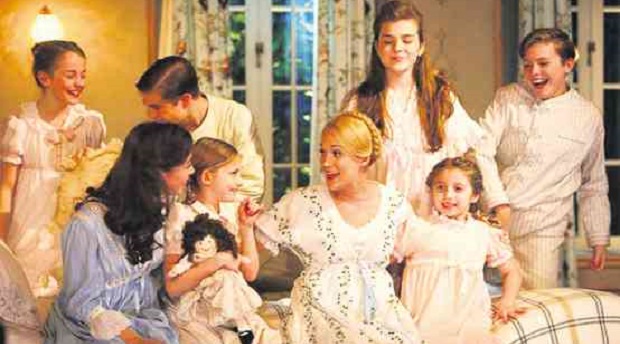Carrie Underwood thinks of her favorite things when she gets cruel tweets from unsatisfied viewers of the latest incarnation of Rodgers and Hammerstein’s “The Sound of Music.”
After watching the much-buzzed-about NBC production early this week, we can somberly say that the former American Idol has indeed a lot to learn about playing musical theater’s favorite singing nanny-to-mommy, but shouldn’t feel so bad about all the vitriol thrown her way.
Is the newly minted staging a “desecration” of the revered musical-theater piece? The first factor to consider is the fact that Underwood’s version is a live production, whereas the Julie Andrews starrer was shot on a movie set with a much more controlled setting. Comparisons are unavoidable, of course— but, comparing a singer’s recorded voice to live singing simply doesn’t make much sense. So, let’s cut Underwood some slack, shall we?
There are musical roles better-suited to actresses who can carry a tune and thus can be character-sung. In contrast, Maria requires superlative singing skills and formidable acting chops that alternately demonstrate the former postulant’s stubborn spirit and gentle, nurturing nature.
Truth is, it’s hard not to get bowled over by the rich texture and unforced trills that come out of Carrie’s mouth when she performs “Something Good” or the exceedingly tricky “Lonely Goatherd.” Such is her prodigious musicality that the hills—and everything around her—come to life when she sings!
That isn’t to say that that’s all there is to acting in musicals. What Underwood fails to live up to is the internal life that Julie Andrews movingly nurtured from scene to scene and evocatively shared with her audience in the 1965 Oscar-winning feature film. We don’t just see and hear the shift in motivation, mood and telling nuances—we also feel them!
In scene studies and acting exercises, a teacher-director usually asks, “What’s at stake for your character?” It’s a question whose answer feels occasionally ambiguous in the hand of the 30-year-old singer-actress. The shifts are earnest, but occasionally automatic.
Different temperaments
But, these are things that can be learned and “perfected” with time, training, experience—and repeated rehearsals. Besides, it’s impossible to expect identical performances from actors with different temperaments playing the same role. (Think Mitch Valdes and Isay Alvarez’s contrasting but similarly exceptional portrayals of Katy dela Cruz in “Katy!,” or Lea Salonga, Monique Wilson and Jenine Desiderio as Kim in “Miss Saigon.”)
The production’s glorious music and gorgeous sets will take your breath away—like, when a panel opens up to dramatize Maria’s temporary “escape” from the Von Trapp mansion to the convent.
Now, let’s weigh in on the merits and flaws of the other members of the production: Stephen Moyer lacks the dashing smolder and imposing, rich baritone of Christopher Plummer’s Captain von Trapp, but his finely tuned dramatic chops make his thespic rendering of the Austrian nationalist more accessible and empathetic.
Laura Benanti and Ariane Reinhart are fabulous as Baroness Elsa Schrader and Liesl, respectively, but Michael Campayno looks too old as Rolf Gruber—a role that is surprisingly always difficult to cast!
As the Mother Abess, the exceptional Audra McDonald will make your heart skip a beat, as it did ours—she’s as gentle as she is resolute, and she hits every note she sings (“Climb Every Mountain,” “How Do You Solve A Problem Like Maria?” and “My Favorite Things,” her duet with Maria) out of the ballpark! (We’re just not sure how, as a black nun, she was able to evade the pungent ire of bigots in the politically incorrect 1940s!)


